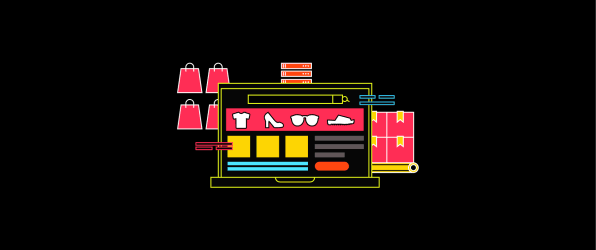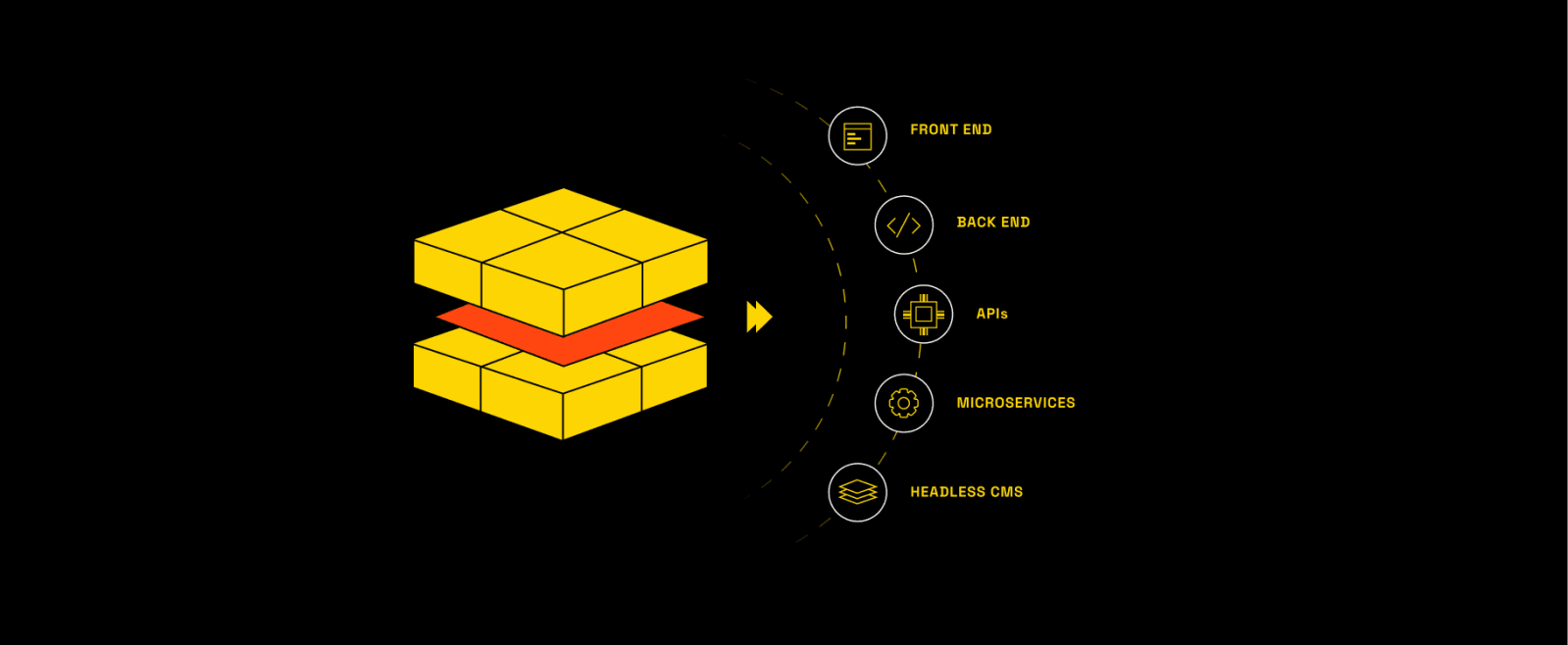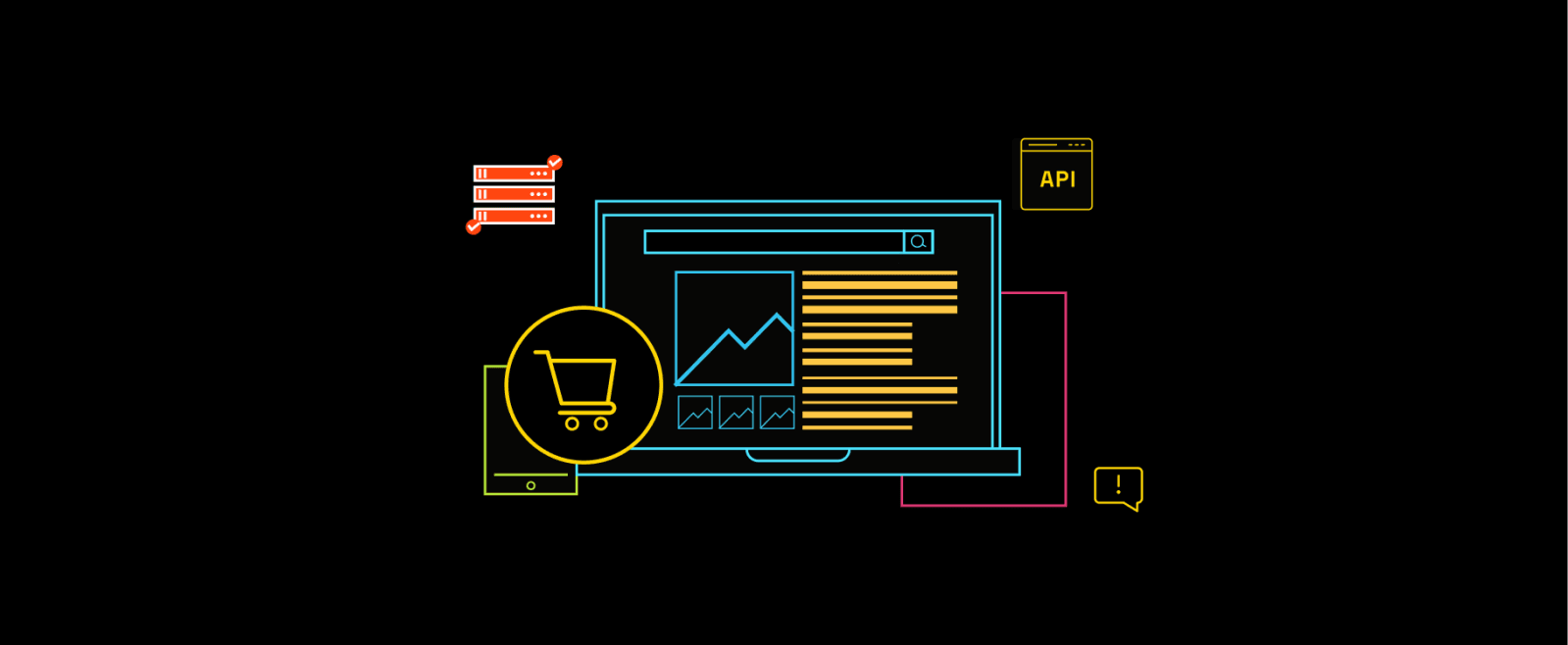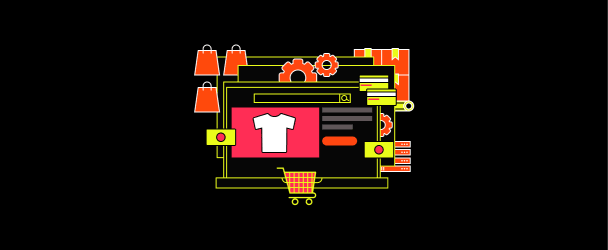What is Headless Commerce and What it Means for Your Business
In the world of eCommerce, growth, social media, and cutting-edge technology is the talk of the town. Brands today are like gladiators in a digital colosseum, battling it out with rivals from around the world. They strive to grab shoppers' attention, spark conversations, turn them into loyal customers, and keep them returning for more.
However, these brands face significant challenges:
- Fierce competition from every corner of the globe
- Expensive customer acquisition costs (CAC)
- The ongoing battle to build brand loyalty
- The absence of third-party cookie support for personalized experiences
Enter headless commerce with a promising solution.
What is headless eCommerce?
Headless commerce is an eCommerce architecture where the front end (what users see) is separated from the back end (where data is managed). Developers can customize the user interface without affecting the underlying systems that manage products, payments, and customer data. This makes it easier to update and tailor the user interface as needed.
This approach provides more flexibility and faster performance on different devices and platforms.
Why Are Businesses Shifting to Headless Commerce?
1. The rise of omnichannel commerce
Consumers today shop via mobile apps, voice assistants, wearables, smart TVs, and even game consoles. Each of these platforms acts as a unique point of interaction—a "head"—through which brands connect with their audience.
Traditionally, digital storefronts were directly tied to the backend systems handling catalogs, inventory, payments, and fulfillment. However, this model no longer suffices in a world where each device has its own interface requirements and consumer expectations for personalization.
The decoupled headless architecture allows brands to manage a unified backend while delivering tailored experiences across diverse platforms through APIs. While customers might not be directly aware of the headless commerce model, they definitely experience its benefits through smoother, more personalized interactions.
2. Catering to ever-evolving customer expectations
The pandemic changed how people shop. Now, they want more options, like checking store stock online before going in, ordering online and picking up in the store, and shopping exclusively on the web. Headless commerce enables brands to quickly adapt to these omnichannel trends. By separating frontend and backend tasks, companies can deploy new marketing strategies and customer engagement tactics without bogging down in technical complexities.
This agility helps businesses meet ever-changing customer demands more effectively, akin to a Swiss Army knife, always ready to address new challenges.
What are the Common Use Cases for Headless Commerce?
Headless commerce is gaining traction in today's digital economy, but some mid-market companies remain reliant on older systems that limit brand experiences.
With a single codebase handling all heavy lifters – the CMS, the shopping cart, site design, and product management – flexibility is compromised, and updates are slowed down. This ultimately leads to missed sales opportunities, such as IoT.
So, how can the best headless commerce platforms help you achieve your business goals? Let's explore some practical use cases:
Headless Commerce Use Case 1: Connect with customers everywhere and in every way.
Imagine a customer browsing your website for a product, adding it to their cart, but not completing the purchase. With headless architecture, you can send a personalized email reminding them of the product and their abandoned cart. The email may also include product recommendations and a special discount code to incentivize them to buy.
That's not all! When your customer searches for the same product on their mobile device, the headless architecture lets you personalize their experience with mobile-specific content like a mobile-optimized website or app. You can also streamline the checkout process by offering mobile payment options like Google Pay or Apple Pay.
Moreover, the headless architecture enables you to deliver targeted content to customers on various social media platforms based on their interests and behavior. For instance, send a personalized Instagram ad to a customer who previously engaged with your brand on Instagram or a targeted Facebook ad to a customer interested in a particular product.
Traditional platforms may provide some level of multi-channel integration, but it often requires additional effort and time to ensure a consistent and seamless experience across various devices and platforms. Integrations might be limited or more challenging to achieve due to the monolithic structure of traditional platforms.
With headless commerce, the possibilities for integrating multiple channels and delivering seamless content are endless, creating a personalized and connected customer experience regardless of how they interact with your brand.
Headless Commerce Use Case 2: Secure customers' payment data effortlessly.
Managing PCI compliance, fraud protection, and checkout security can be a headache for eCommerce brands. A single data breach can damage a company's reputation and result in costly fines and legal fees. Traditional platforms may provide these services, but headless commerce simplifies the process.
Using a SaaS provider with your headless architecture can help reduce the workload for your internal IT team and streamline the process of staying compliant and secure. SaaS providers can take on the risk and manage the process, helping you stay updated with the latest regulations and providing continuous monitoring to prevent breaches without burdening your internal IT team.
With the best headless eCommerce platforms, you can focus on growing your business and providing an exceptional customer experience while your SaaS provider handles your payment security needs.
Headless Commerce Use Case 3: Bring your eCommerce personalization dreams to life.
Headless commerce's open architecture allows you to achieve anything you can dream up. Indeed, the personalization possibilities are endless. You can use pre-built integrations with platforms for ERP, CRM, and many more functions or opt for custom builds using APIs and SDKs, enabling you to create a truly unique and personalized experience for each customer.
In traditional commerce, the monolithic eCommerce systems can limit personalization capabilities, leading to generic customer experiences. In contrast, going headless provides the opportunity to create targeted product recommendations based on a customer's purchase history or browsing behavior.
You can also personalize their journey by presenting relevant content based on their preferences and interests. Another major benefit of headless commerce - it is easier to integrate third-party personalization tools and tailor the user experience without being constrained by the traditional limitations.
Because ultimately, building loyalty and increasing CLV is best achieved by tailoring customers' experiences to their needs and interests.
Understanding the Headless Commerce Architecture
Traditionally, online stores are built as one big unit. Changing the look or adding features often requires complex updates to the entire system.
Headless commerce breaks this mold by separating the front-end presentation layer from the back end functionality.
So, an online store's storefront (the front end) can be easily customized without tinkering with the stockroom and inventory system (the back end). That's the core idea behind headless commerce.
Here's how it works:
- Front-end Freedom: You can design your online store using any technology. Headless stores communicate with the back-end through APIs (think of them as messengers). This lets you create a unique storefront experience tailored to your brand.
- Backend Powerhouse: The back end handles the crucial tasks – product inventory, order processing, customer data, etc. It remains independent, ensuring smooth operation even when you update the front end.
- API Connection: APIs act as the bridge, allowing the front end to request information (like product details) and tell the back end what to do (like adding an item to the cart). This allows for customization, adding new features and integrations like payment gateways or chatbots, and adapting new technologies and customer touchpoints.
Headless commerce offers a powerful way to create a dynamic and engaging shopping experience. To explore further into how headless commerce architecture works, check out our blog on headless commerce architecture.
Differences between Headless Commerce and Traditional Commerce
Traditional platforms take a monolithic approach, where the front-end (user interface) and back-end (data and logic) are tightly coupled. This translates to:
- Theme-based Customization: While themes and templates offer some design flexibility, they operate within the platform's pre-defined framework. Think of it like customizing a pre-built car – you can change the paint and interior, but the core engine and chassis remain the same.
- Limited Integration: Adding new features or functionalities often requires extensive coding within the platform's environment. Integrating with external systems can be complex and resource-intensive.
- Scalability Bottlenecks: As your business grows, scaling a monolithic system becomes challenging. Performance issues can arise if the front-end and back-end can't handle increased traffic or data demands. Upgrading may require significant rework of the entire system.
Headless commerce flips the script. The front-end presentation layer is decoupled from the back-end functionality, communicating through APIs (Application Programming Interfaces). Here's the technical advantage:
- Unbridled Customization: Headless allows complete freedom in designing the front end using any technology stack (React, Vue.js, etc.). This empowers businesses to create a truly unique and brand-specific shopping experience from the ground up.
- Agile Integrations: APIs act as messengers, enabling seamless integration with various systems like payment gateways, CRM platforms, or loyalty programs. New features can be added quickly and independently without impacting the core back-end functionality.
- Microservices for Scalability: Headless commerce leverages a microservices architecture. Back-end functionalities like product management or order processing are broken down into independent, modular services. This allows for individual scaling of each service based on specific needs, ensuring smooth performance even during peak traffic.
What are the Advantages of Headless Commerce?
For Developers:
- Faster Development Cycles: Decoupled front-end and back-end allow developers to work independently. Front-end updates can happen without impacting back-end functionality, streamlining development workflows.
- Tech Stack Freedom: Developers are not limited to the platform's technology stack. They can choose the best tools for the job (React, Angular) based on project needs and expertise, leading to cleaner, more maintainable code.
- Improved Developer Experience: Modern APIs offer a well-defined communication layer, making integration and data exchange between front-end and back-end services smoother and faster. This translates to a more enjoyable development experience.
- Easier Testing and Debugging: Isolated front-end components can be easily unit-tested, improving code quality and reducing bugs. Troubleshooting front-end issues becomes faster as they're not intertwined with back-end complexities.
For E-Commerce Business Owners:
- Reduced Time-to-Market: The decoupled architecture allows for faster development and deployment of new features and functionalities, giving businesses a competitive edge in a fast-paced market.
- Lower Long-Term Costs: While the initial investment might be higher, headless commerce avoids vendor lock-in and allows businesses to choose best-of-breed solutions for specific needs. This can lead to cost savings in the long run compared to being tied to a single platform's pricing structure.
- Enhanced Developer Productivity: The freedom to choose the right tech stack and streamlined development workflows lead to more efficient developer utilization. This translates to faster development cycles and improved ROI on development resources.
- Omnichannel Commerce: Headless architecture facilitates seamless integration with various touchpoints (mobile apps, smartwatches, etc.). This empowers businesses to deliver a consistent and engaging brand experience across all channels.
- Future-Proof Agility: The modular nature of headless commerce allows businesses to adapt and evolve with changing technologies and customer demands. New features and integrations can be added easily, ensuring the platform remains competitive in the long run.




